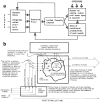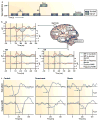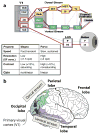When doors of perception close: bottom-up models of disrupted cognition in schizophrenia
- PMID: 19327031
- PMCID: PMC4501390
- DOI: 10.1146/annurev.clinpsy.032408.153502
When doors of perception close: bottom-up models of disrupted cognition in schizophrenia
Abstract
Schizophrenia is a major mental disorder that affects approximately 1% of the population worldwide. Cognitive deficits are a key feature of schizophrenia and a primary cause of long-term disability. Current neurophysiological models of schizophrenia focus on distributed brain dysfunction with bottom-up as well as top-down components. Bottom-up deficits in cognitive processing are driven by impairments in basic perceptual processes that localize to primary sensory brain regions. Within the auditory system, deficits are apparent in elemental sensory processing, such as tone matching following brief delay. Such deficits lead to impairments in higher-order processes such as phonological processing and auditory emotion recognition. Within the visual system, deficits are apparent in functioning of the magnocellular visual pathway, leading to higher-order deficits in processes such as perceptual closure, object recognition, and reading. In both auditory and visual systems, patterns of deficit are consistent with underlying impairment of brain N-methyl-d-aspartate receptor systems.
Figures






References
-
- Bilder RM, Goldman RS, Robinson D, Reiter G, Bell L, et al. Neuropsychology of first-episode schizophrenia: initial characterization and clinical correlates. Am J Psychiatry. 2000;157:549–59. - PubMed
-
- Blake W. The Prophetic Books of William Blake: Jerusalem. Whitefish, MT: Kessinger Publ; 2006.
-
- Bleuler E. Dementia Praecox of the Group of the Schizophrenias. New York: Intl. Univ. Press; 1950.
-
- Braff DL, Saccuzzo DP. The time course of information-processing deficits in schizophrenia. Am J Psychiatry. 1985;142:170–74. - PubMed
Publication types
MeSH terms
Substances
Grants and funding
LinkOut - more resources
Full Text Sources
Other Literature Sources
Medical

